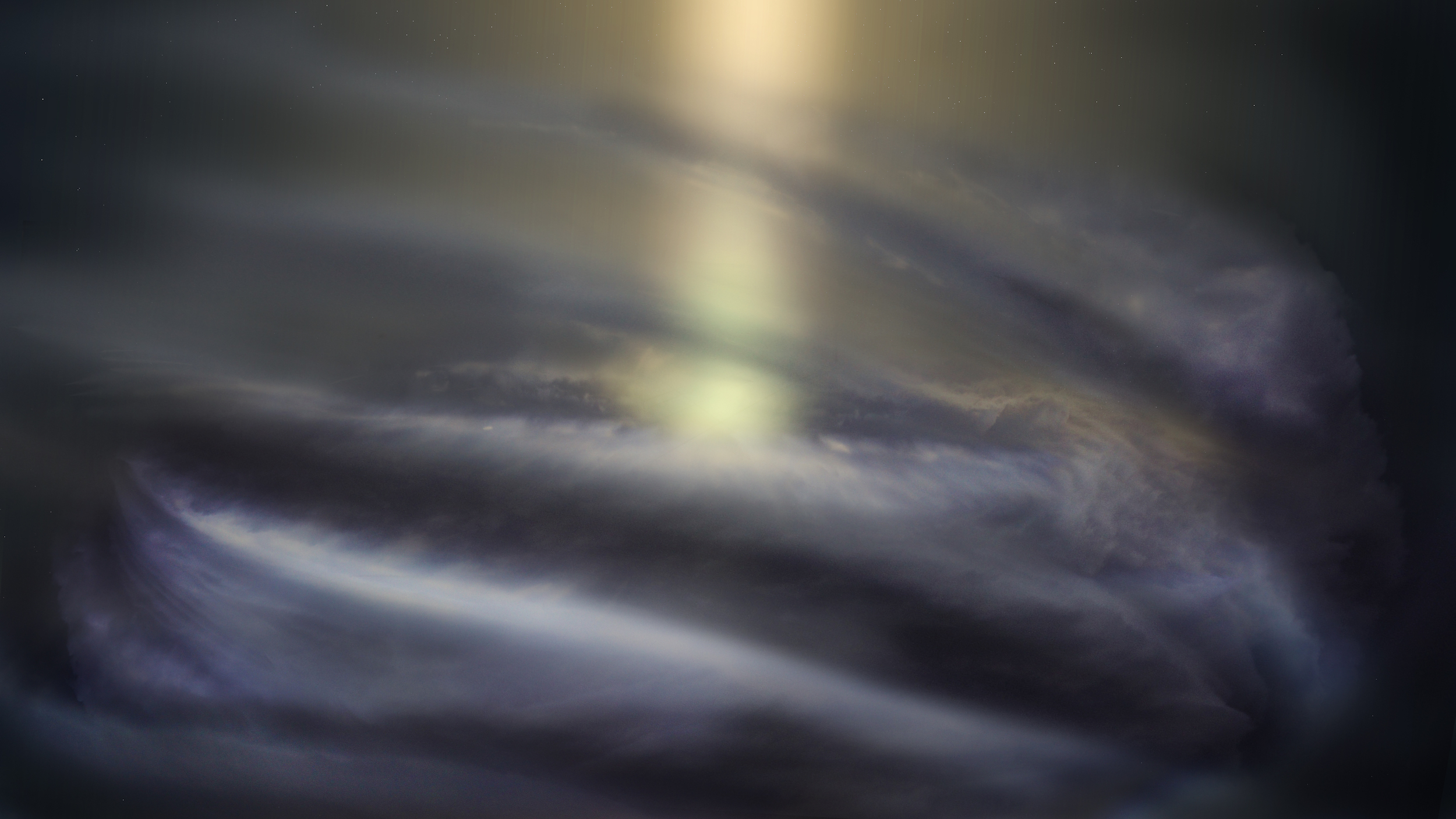
At the center of our galaxy, approximately 26,000 light-years away, is a supermassive black hole called Sagittarius A* (pronounced A Star). This epic black hole is four million times the mass of our sun, and is the center point around which our galaxy spins. Scientists have long theorized that there must be gas and dust orbiting the black hole which gather together in what is termed an accretion disk.
Now astronomers have observed the entire accretion disk for the first time. The center of the disk is a portion of super hot gas at a temperature of 10 million degrees Celsius (18 million degrees Fahrenheit), which is half the temperature in the core of the Sun. This hot gas glows and gives off X-rays which can be detected by space-based telescopes.
In addition to the hot gas, there is a huge ring of cooler hydrogen gas at a temperature of nearly 10 thousand degrees Celsius (18,000 degrees Fahrenheit). This cooler gas stretches several light-years from the black hole and is much harder to spot from Earth.
It is this cooler portion that was recently imaged for the first time. The researchers looked for a particular wavelength of light which is given off when hydrogen gas ionizes and which can reach all the way to Earth. They were able to detect these radio signals and use this data to produce the first image of the gas disk, as well as seeing how the gas rotates around the black hole.

The data was gathered by the Atacama Large Millimeter/submillimeter Array (ALMA), a group of 66 antennas in Chile which work together to form a kind of giant telescope. ALMA uses a technique called interferometry in which multiple signals from different antennas are combined together to see further out into the sky. This allows it to capture very distant events like the formation of planets in surprising detail, and is what enabled it to detect the radio signals from the gas disk around the supermassive black hole.
“We were the first to image this elusive disk and study its rotation,” Elena Murchikova, lead author of the paper and a member of the Institute for Advanced Study in Princeton, New Jersey, said in a statement.“We are also probing accretion onto the black hole. This is important because this is our closest supermassive black hole. Even so, we still have no good understanding of how its accretion works. We hope these new ALMA observations will help the black hole give up some of its secrets.”
The findings are published in Nature.
Editors' Recommendations
- ‘Closest black hole’ isn’t actually a black hole, but a stellar vampire
- How James Webb will peer through a dusty cloud to study supermassive black hole
- Six galaxies trapped in cosmic web could explain supermassive black hole growth
- Hubble images dusty galaxy to learn about supermassive black holes
- Astronomers search tiny galaxies to understand the evolution of black holes




